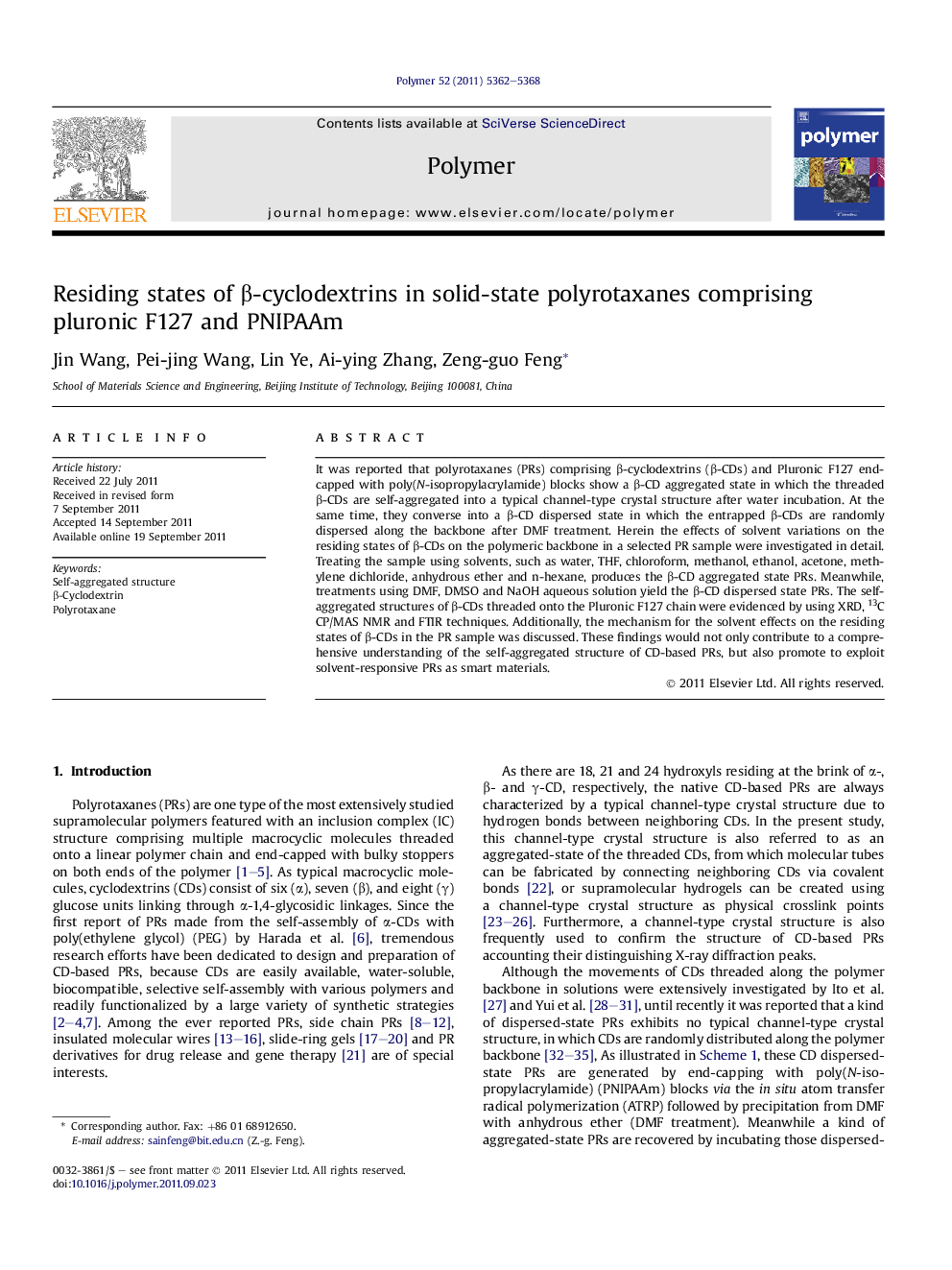| Article ID | Journal | Published Year | Pages | File Type |
|---|---|---|---|---|
| 5184031 | Polymer | 2011 | 7 Pages |
It was reported that polyrotaxanes (PRs) comprising β-cyclodextrins (β-CDs) and Pluronic F127 end-capped with poly(N-isopropylacrylamide) blocks show a β-CD aggregated state in which the threaded β-CDs are self-aggregated into a typical channel-type crystal structure after water incubation. At the same time, they converse into a β-CD dispersed state in which the entrapped β-CDs are randomly dispersed along the backbone after DMF treatment. Herein the effects of solvent variations on the residing states of β-CDs on the polymeric backbone in a selected PR sample were investigated in detail. Treating the sample using solvents, such as water, THF, chloroform, methanol, ethanol, acetone, methylene dichloride, anhydrous ether and n-hexane, produces the β-CD aggregated state PRs. Meanwhile, treatments using DMF, DMSO and NaOH aqueous solution yield the β-CD dispersed state PRs. The self-aggregated structures of β-CDs threaded onto the Pluronic F127 chain were evidenced by using XRD, 13C CP/MAS NMR and FTIR techniques. Additionally, the mechanism for the solvent effects on the residing states of β-CDs in the PR sample was discussed. These findings would not only contribute to a comprehensive understanding of the self-aggregated structure of CD-based PRs, but also promote to exploit solvent-responsive PRs as smart materials.
Graphical abstractDownload full-size image
